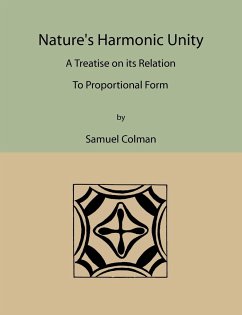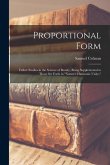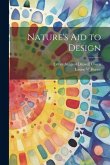2009 Reprint of the original 1912 edition. Paperback 327pp. With 302 illustrations by the author. Baumring's Top Pick for an Understanding of Harmonic Order of Nature. Beautiful Analysis of the Harmonic Structure of All Types of Forms in Nature Clearly Showing the Order of their Form. "A monumental work of great erudition showing the fundamental unity of all design in nature, from the microscopic to the galactic, but most especially the unity of design in architecture, and biology. The original 1912 edition is very rare. This is the only cloth reprint, other reprints lack illustrations. The handful of folding plates in the original edition have here been reduced to fit one page each. It has been interesting to compare this work with that of Thompson's On Growth and Form (see catalogue 75), and then to compare these two books with Neal's All Done with Mirrors. Neal, who writes as a Platonist, concentrates on the ancient world, and shows that the ancients knew most if not all that Thompson and Colman present, and more, for Neal brings it all into the spiritual realm and makes it obvious that the principals of science and math are nothing but the hand of god made manifest."-Todd Pratum. Samuel Colman was born in Portland, Maine in 1832. His father was a fine-arts bookseller and publisher who moved to New York City while Samuel, Jr. was a boy. His store on Broadway became a center for artists and literary types. In New York, Colman studied painting under Hudson River artist Asher B. Durand. At age 18 he showed his first painting, "Morning", at the National Academy of Design; in 1860 he was already an associate, and by 1862 he had become a full academician. He exhibited at the Boston Athenaeum, the Maryland Historical Society, and the Pennsylvania Academy of Fine Arts.From 1860 to 1862 and from 1871 to 1875, Colman traveled to France, Italy, Spain and Morocco, studying and painting. His oils before 1870 are characterized by a lucid style indicative of an affinity for watercolor, which he also used. His later work shows the influence of the barbizon painters in bucolic, unpopulated scenes, broadly executed. Colman was a many faceted man: etcher, collector and authority on oriental art and porcelains. He did some interior design and worked for Louis Comfort Tiffany and John Lafarge in the 1880's. He wrote two books on art, Nature's Harmonic Unity, and Proportional Form. Samuel Coleman died in New York in 1920.
Hinweis: Dieser Artikel kann nur an eine deutsche Lieferadresse ausgeliefert werden.
Hinweis: Dieser Artikel kann nur an eine deutsche Lieferadresse ausgeliefert werden.








